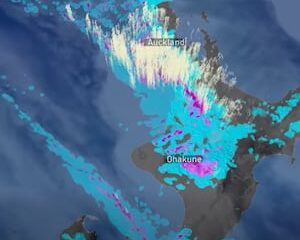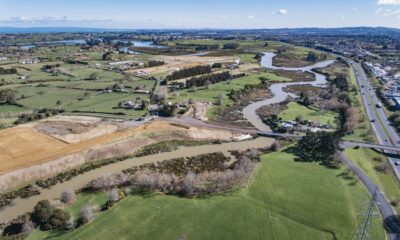Business
New Zealand Sharemarket Holds Steady as Focus Shifts Offshore

The New Zealand sharemarket demonstrated stability on March 15, 2024, as attention shifted towards the United States, where major companies began releasing their financial results. The S&P/NZX 50 Index closed with a modest increase of 0.09%, or 11.06 points, reaching a total of 12,805.13. Trading volume was robust, with a total of 25,087,224 shares exchanged, valued at approximately $93.2 million.
Performance across the indices reflected a similar trend. The S&P/NZX 20 Index rose by 0.07%, closing at 7,499.26, while the S&P/NZX 10 Index experienced a slightly larger gain of 0.27%, ending the day at 12,527.42. On the main board, there were 76 gainers compared to 60 decliners, indicating a generally positive sentiment among investors.
Leadership Changes at NZX
A significant development in the New Zealand market came with the announcement of Mark Peterson, the chief executive of NZX, who stated his intention to resign. Peterson’s departure is set for the end of April 2026, following the company’s annual meeting. His resignation marks a pivotal moment for NZX as it navigates the challenges and opportunities within the market.
Investors are likely to keep a close eye on upcoming reports from major US firms, as these results could influence market sentiment domestically. As the global financial landscape evolves, the New Zealand sharemarket remains a focal point for local and international stakeholders alike.
-

 Sports2 months ago
Sports2 months agoNetball New Zealand Stands Down Dame Noeline Taurua for Series
-

 Entertainment2 months ago
Entertainment2 months agoTributes Pour In for Lachlan Rofe, Reality Star, Dead at 47
-

 Entertainment2 weeks ago
Entertainment2 weeks agoNew ‘Maverick’ Chaser Joins Beat the Chasers Season Finale
-

 Sports2 months ago
Sports2 months agoSilver Ferns Legend Laura Langman Criticizes Team’s Attitude
-

 Politics3 weeks ago
Politics3 weeks agoNetball NZ Calls for Respect Amid Dame Taurua’s Standoff
-

 Entertainment2 months ago
Entertainment2 months agoKhloe Kardashian Embraces Innovative Stem Cell Therapy in Mexico
-

 World3 months ago
World3 months agoPolice Arrest Multiple Individuals During Funeral for Zain Taikato-Fox
-

 Sports2 months ago
Sports2 months agoGaël Monfils Set to Defend ASB Classic Title in January 2026
-

 Entertainment4 weeks ago
Entertainment4 weeks agoTyson Fury’s Daughter Venezuela Gets Engaged at Birthday Bash
-

 Sports4 weeks ago
Sports4 weeks agoHeather McMahan Steps Down as Ryder Cup Host After Controversy
-

 Entertainment4 weeks ago
Entertainment4 weeks agoTyson Fury’s Daughter Venezuela Gets Engaged at Birthday Bash
-

 World4 weeks ago
World4 weeks agoNew Zealand Firefighters Plan Strike on October 17 Over Pay Disputes



















